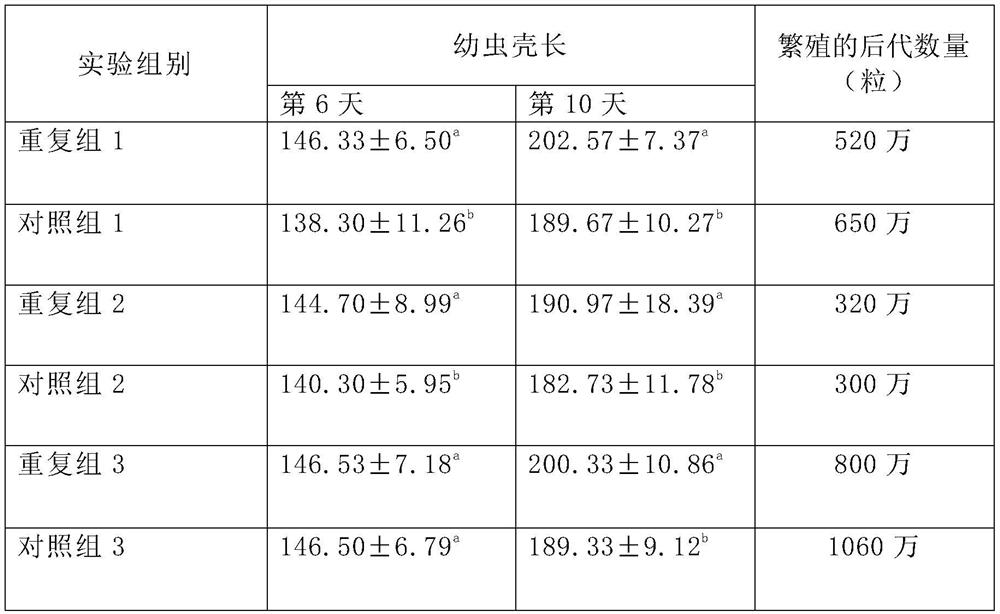A water-saving nursery method suitable for bay scallops
A scallop and bay technology, applied in the field of seedlings, can solve the problems of not being able to adapt to the healthy and sustainable development of the scallop breeding industry, the high cost of heating seawater, and the increased pressure of technological innovation, so as to promote healthy and sustainable development, improve the success rate of seedlings, Effect of reducing carbon dioxide and dust emissions
- Summary
- Abstract
- Description
- Claims
- Application Information
AI Technical Summary
Problems solved by technology
Method used
Image
Examples
Embodiment
[0019] In December, fresh baits such as golden algae, flat algae and diatoms began to be cultivated, and the bait cultivation environment was continuously improved in strict accordance with the bait cultivation standards to ensure that high-concentration, high-quality fresh bait was cultivated. The principle of bait use is that the concentration is less than the set There is no need to set standards.
[0020] In January of the following year, 5,000 well-developed sexually mature scallops were selected from the Shandong Jiaonan Bay Scallop Breeding Area as broodstock, and transported to the workshop of Shandong Qingdao Laoshan Laodonghai Treasures Breeding Co., Ltd. to carry out water-saving breeding experiments on bay scallops. The broilers are kept in the workshop for about a month, during which they are fed fresh diatoms supplemented with spirulina, egg yolk and other substitute baits.
[0021] When it is observed that the gonads of the parents are gradually full, the bay sc...
PUM
 Login to View More
Login to View More Abstract
Description
Claims
Application Information
 Login to View More
Login to View More - R&D Engineer
- R&D Manager
- IP Professional
- Industry Leading Data Capabilities
- Powerful AI technology
- Patent DNA Extraction
Browse by: Latest US Patents, China's latest patents, Technical Efficacy Thesaurus, Application Domain, Technology Topic, Popular Technical Reports.
© 2024 PatSnap. All rights reserved.Legal|Privacy policy|Modern Slavery Act Transparency Statement|Sitemap|About US| Contact US: help@patsnap.com








